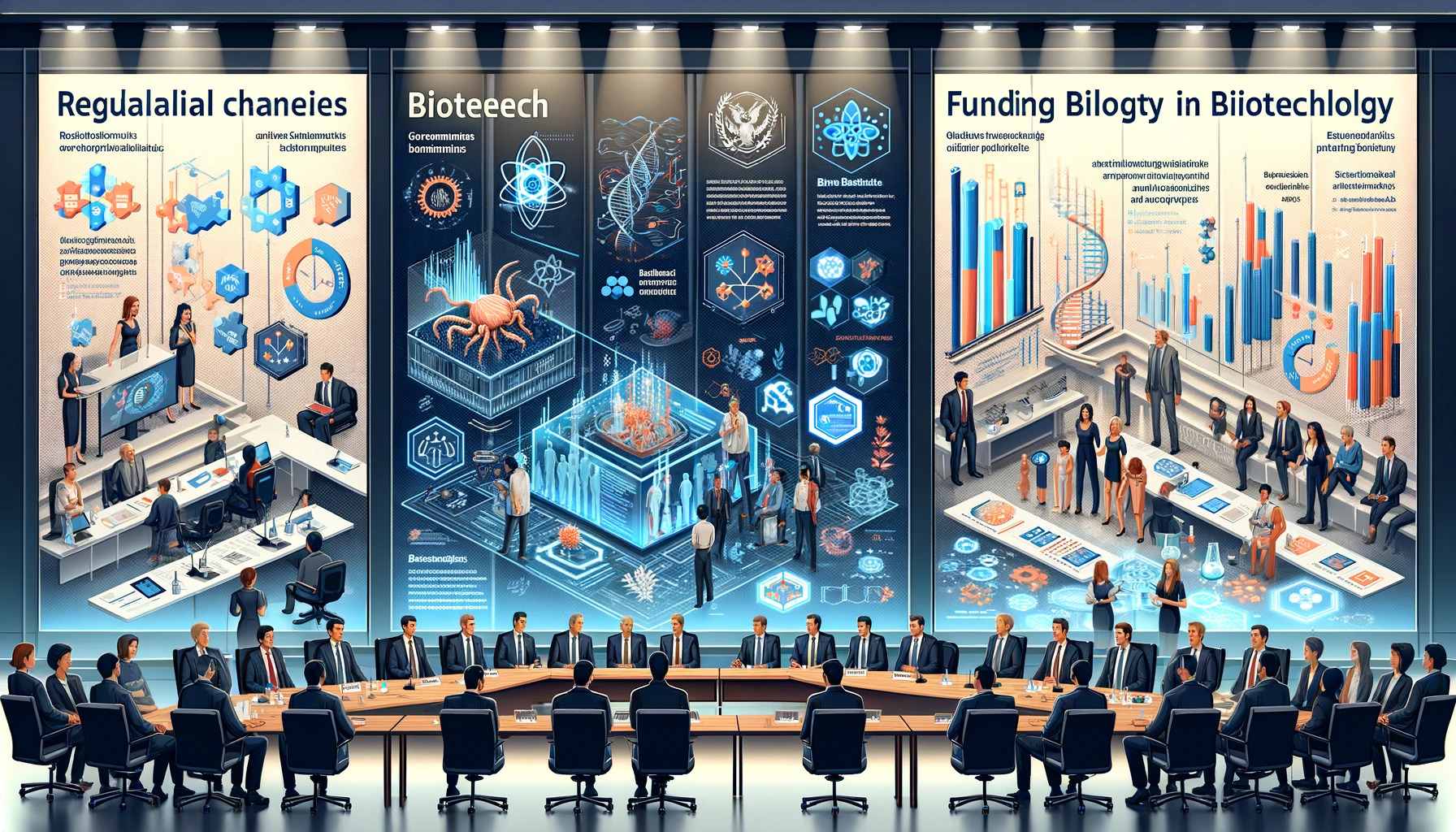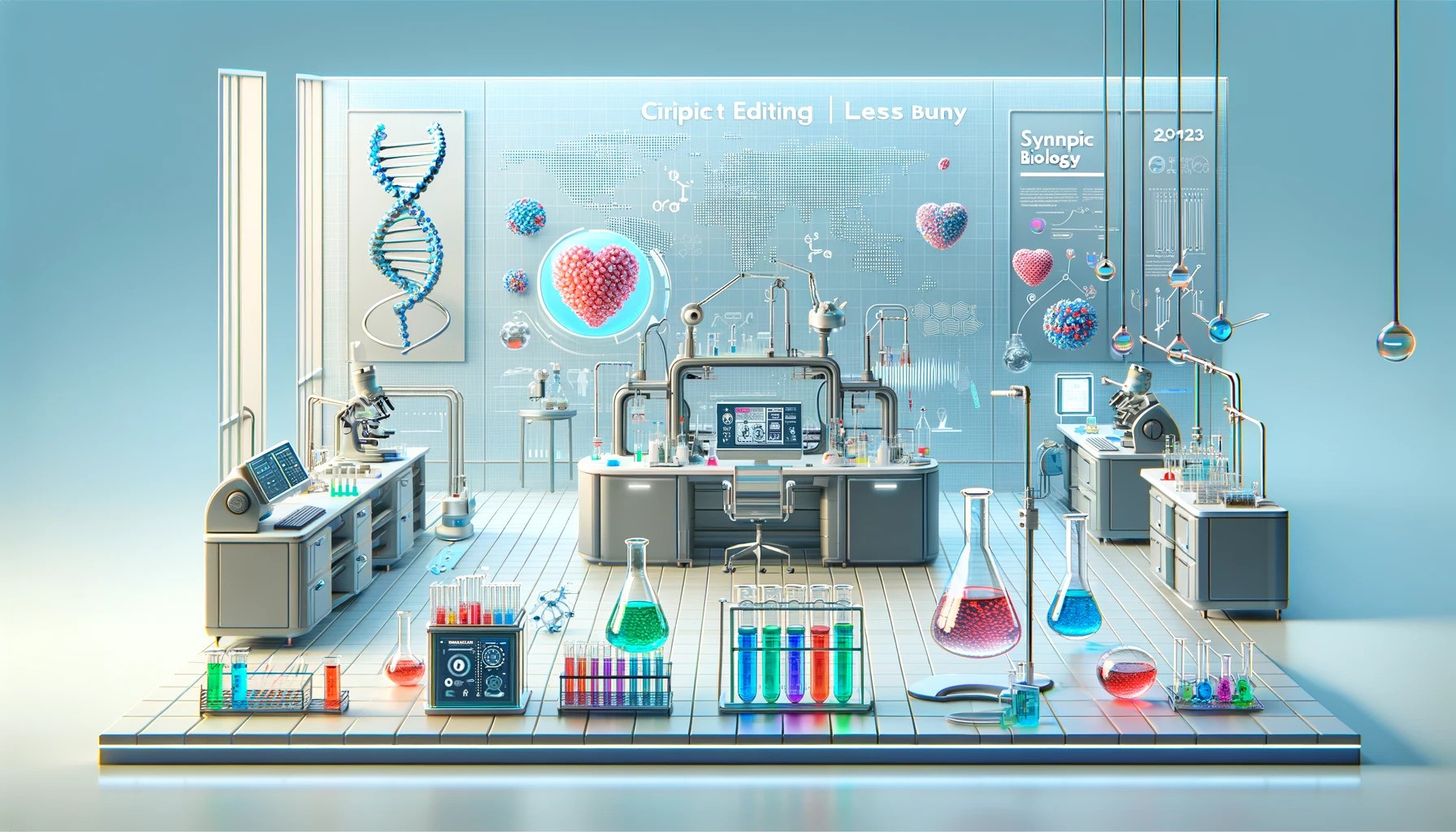
10 Biotech Trends Shaping 2024: Funding, CRISPR, and more
What regulations, technologies, and trends are hot in biotech today?
Top issues that today's best biotech companies face
Dry Funding & IPOs
Money's harder to come by. IPOs aren't what they used to be. Companies with big ideas but no products struggle more than those with something to sell - data.
Tougher Regulations
The government's watching closer now, making it harder to push through new treatments. Red tape slows everything.
Tougher Regulations
The government's watching closer now, making it harder to push through new treatments. Red tape slows everything.
RNA & CRISPR's Edge
New tech offers big promises for fixing bad genes, but it's not simple. Making it work, getting it approved—that's the hard part.
Rocky Cell & Gene Therapies
These therapies could change lives, but getting them from lab to patient isn't easy. Startups feel the pinch to keep the lights on and their science moving.
Rocky Cell & Gene Therapies
These therapies could change lives, but getting them from lab to patient isn't easy. Startups feel the pinch to keep the lights on and their science moving.
Don't let these types of issues stop you from being the next trend in biotech. Unlock the market with our experts today!
10 Biotech Trends in 2024 - Regulations, Precision Medicine, AI, and more
As we venture towards Q2 of 2024, biotech remains the beacon of healthcare innovation, and it doesn’t seem to be slowing. For stakeholders, the need to understand what is happening in the sector grows more critical.
In this blog, we will cover and update you on biotech trends, such as:
Artificial intelligence
Genomics
Remote Monitoring
CRISPR & Cell Therapy
Bioprinting
Data Protection
Talent Pool Landscape
Join us as we survey the biotech trends that we will be keeping our eyes on for the foreseeable future.
1. AI Continues to Enhance Diagnostics & Treatment
Artificial Intelligence, or AI, continues to drive healthcare. With its rapidly expanding applications, it revolutionizes diagnostics and treatment strategies by uncovering hidden patterns in enormous datasets.
By using genomic signal processing, sequencing, imaging, and records, AI continually enables earlier, accurate detection for cancer, obesity, and Alzheimer's. And that’s just the beginning.
‘AI is the most exciting field to watch, especially technologies that convert data and demonstrate value,’ says Piers Morgan, CFO of Pangea Botanica.
However, there are challenges of course. Particularly regarding understanding how generative AI’s predictions are made. Aamir Butt, Chair of Mazards, notes this may become relevant in 2024.
‘Do we know the underlying reasons for what AI predicts? Mostly, but not always. This could imply a significant new space in medical R&D.’
Despite these challenges, companies like Tempus, BioSplice, and ElevateBio are paving the way with innovative Artificial Intelligence in healthcare. Personalized Medicine Market Report 2024 predicts ‘new technologies and innovative solutions will drive the market's revenue generation and increase its share by 2031’.
2. Precision Medicine & Genomic Sequencing
Fueled by advancements in genomic sequencing, precision medicine continues its healthcare revolution. Precision medicine techniques like Next-Generation Sequencing (NGS) and single-cell sequencing are providing more insights into the genetic underpinnings of diseases.
‘The [gene]omics race that kicked off in 2022 seems to be turning into an ultramarathon,’ reports GenEngNews.com.
In precision medicine, companies like Singular Genomics push innovation and offer new possibilities for targeted therapies. But Singular Genomics is just one of many companies looking for the next massive breakthrough.
Precision medicine's impact continues to extend beyond oncology into cardiovascular disorders, neurological conditions, and rare genetic disorders.
But that is just for now. What new innovations will we see from this space next? This is a sector to pay attention to through 2024.
3. Gene Editing & CRISPR
In its 11 years of existence, CRISPR therapeutics has continued to advance precision medicine. A testament to that advancement is the newest gene editing development called CRISPR-CasΦ (phi).
As successor of CRISPR Cas9, CasΦ underscores the potential for precise genome editing that CRISPR therapeutics can offer. From correcting disease-causing mutations to modulating gene expression, CRISPR therapeutics holds promise for a range of uses beyond genetic disorders. One of these uses is not necessarily healthcare at all, it is agricultural uses as well that will aid the fight against climate change.
‘CRISPR is poised to continue its remarkable growth trajectory through 2024,’ says CEO at ERS Genomics, Eric Rhodes.
However, ethical and regulatory considerations loom. Regulatory agencies grapple with innovation, safety, and ethical balances. This regulatory holdup could mold the future of CRISPR-based therapies, for better or worse.
4. Immunotherapy & Cell Therapy
Cell therapy and immunotherapy revolutionizes treatments by harnessing the body's immune system. By doing so, cancer cells can be targeted and removed. From immune checkpoint inhibitors to CAR-T cell therapy, these groundbreaking therapies offer new hope for patients with various malignancies.
Beyond oncology, immunotherapy and cell therapy hold promise for addressing a wide range of medical conditions. They include:
Autoimmune diseases
Allergies
Infectious diseases
Organ transplants
Chronic diseases
Immunotherapy and cell therapy offer interventions that improve the quality of life for many. This stream of research will not overturn anytime soon.
5. Regeneration X - 3D Bioprinting & Regenerative Medicine
3D bioprinting and regenerative medicine are reshaping tissue engineering. They offer new possibilities for repairing and regenerating damaged tissues.
It has been reported that tissue engineering revenues will grow from $4.4 billion to $8.9 billion by 2028. This is greatly due to the advancements in bioprinting, and an overall increasing demand for regenerative therapies.
By fabricating personalized tissues and organs, researchers are addressing the critical shortage of donor organs. This also minimizes the risk of rejection in transplantation.
The question that remains to be seen is, can bioprinting prices be kept low enough for patients to afford?
6. Telemedicine, Remote Patient Monitoring & the Internet of Things
With the growing fad of taking health into our own hands, telemedicine and remote patient monitoring stand tall. These innovations enable real-time tracking of health and put the prevention in patients’ hands.
This digital health trend is particularly pronounced in major markets like China and the US. There, telehealth services are experiencing rapid growth partially due to generative AI.
‘Generative AI is poised to democratize access to transformative AI applications,’ reports RecuroHealth.
IoT tech and wearables further integrate remote monitoring, allowing patients to track health metrics in real-time.
According to Mazards CEO, Roop Chandwani: ‘Telehealth reduces wait times and strain on traditional healthcare. Mental health therapies and chronic diseases are prime for telehealth.’
7. Regulatory & Healthcare Policy Trends
Regulatory agencies play a crucial role in ensuring the safety and efficacy of new therapies. And they do this while balancing innovation and patient access. However, regulatory frameworks have struggled to keep pace with rapid advancements in biotechnology, causing stalls in approvals and market access.
The question in 2024 is: can regulators finally keep up?
Healthcare policy also plays a big role in pricing and equitable access to therapies, such as the IRA Bill in the US. Government can incentivize cost-effective treatments and transparency in pricing, easing financial burdens for patients.
Yet, prices remain high, and the best answer currently is for biotechs to work with regulators from the beginning. This way regulators can follow them through R&D.
I wouldn’t hold my breath for this to change this year, but time will tell.
8. Biotech Investment & Market Trends
Venture capital funding drives innovation in the biotech sector. It is the fuel that enables startups to translate scientific discoveries into material products. Nowadays, investors are now more selective than ever.
This selectiveness is marked by a biotech investment bubble formation, followed by that bubble’s burst. This burst left only the most experienced investors to ignite healthcare and biotech innovation.
‘[The biotech market] will continue to struggle,’ says Morgan. ‘But the companies with quality design behind them and good data will not.’
There are great deals of venture capital waiting for the right opportunity in biotech. Will we see the floodgates reopen this year? Considering the many major elections, volatile markets, and global conflicts, it remains to be seen. My money is on a steady year with slow growth.
9. Collaboration & Partnerships
In biotech, collaborations and partnerships across sectors are vital for driving innovation. By forging alliances with established players in the healthcare ecosystem, biotech companies can access new markets, distribution channels, and expertise.
As word spreads, and this theme grows, it is likely that we will see more collaborative ventures in 2024. Not only between biotech companies, but with regulators and investors as well.
These strategic collaborations are important. They enable biotech companies to accelerate R&D innovation and maximize the impact of their therapies. It also assists companies who have plans to scale.
10. Challenges & Opportunities - Data Privacy, Security, and Talent Issues
As biotech propels forward, stakeholders must confront issues such as data security and talent shortages. By prioritizing data security in healthcare as well as talent needs, all parties can prepare for a resilient and thriving ecosystem.
‘Biotech executive search is heating up right now,’ says Roop Chandwani, CEO of Mazards. ‘I’m really seeing it in the US, and it will spread.’
There are many outlets to help biotech and life sciences companies navigate these challenges. The safest method is to create a relationship with an experienced life science executive consulting group, or an executive search consultant of health technology jobs. This is a way to ensure your company is heading in the right direction.
Conclusion
In 2024, biotech continues to progress in healthcare through AI, precision medicine, and CRISPR technology. Despite challenges, collaborations and partnerships are the ways to help innovation and expand your market.
What the rest of 2024 has in store is yet to be seen. We will be watching these spaces with a careful and close eye, as these are where true change will come.
Key Takeaways:
AI and Precision Medicine's influence will remain ubiquitous
CRISPR will continue to open doors
Internet of Things (IoT) integration will expand
Regulatory challenges will likely not be solved just yet
Funding depends on market volatility and geopolitical factors
Collaboration is Key to Innovation
Stay tuned for more life science industry news!
This piece was commissioned by Mazards, a life science headhunting and executive consulting group for biological science jobs UK & globally. It was written by Dastrum, a digital marketing company.
Ready to become the next trend in healthcare? Stay ahead. Whether you're a professional in the field, an investor, or a newcomer, there's always more to discover with Mazards.



